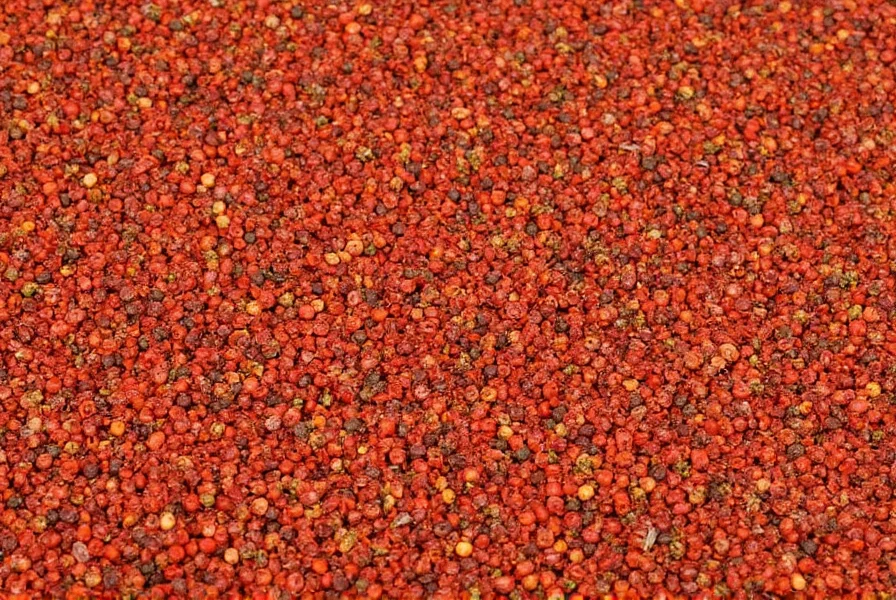Aleppo pepper, scientifically classified as Capsicum annuum and traditionally known as Halaby pepper in its region of origin, represents one of the most distinctive culinary spices to emerge from the Levant. Unlike standard red pepper flakes commonly found in Western pantries, authentic Aleppo pepper undergoes a meticulous preparation process that defines its unique sensory characteristics.
Origin and Traditional Production Methods
The spice takes its name from Aleppo, the ancient Syrian city that served as a major trading hub for this prized ingredient for centuries. Traditionally, ripe peppers are harvested, slit open, deseeded, and then sun-dried for several days. The drying process often involves rubbing the peppers with a small amount of olive oil and salt, which contributes to Aleppo pepper's distinctive flavor profile and helps preserve its vibrant red color.

Flavor Profile and Heat Level
Understanding what is Aleppo pepper made from reveals why it's favored by chefs worldwide. It delivers approximately one-third the heat of cayenne pepper (10,000–15,000 Scoville Heat Units compared to cayenne's 30,000–50,000), with complex flavor notes that include:
- Fruity undertones reminiscent of dried cherries
- Subtle tanginess from the drying process
- Mild saltiness (from traditional preparation)
- Earthy, wine-like notes
- Warm but not aggressive heat
| Spice | Scoville Units | Flavor Characteristics | Common Culinary Uses |
|---|---|---|---|
| Aleppo Pepper | 10,000–15,000 | Fruity, tangy, mildly salty | Mediterranean dishes, roasted vegetables, meats |
| Red Pepper Flakes | 15,000–25,000 | Sharp, one-dimensional heat | Pizza, pasta, tomato sauces |
| Cayenne | 30,000–50,000 | Intense, straightforward heat | Spicy sauces, Cajun cuisine |
Aleppo Pepper vs Red Pepper Flakes: Key Differences
Many home cooks wonder about the Aleppo pepper vs red pepper flakes comparison. While both appear similar visually, they differ significantly:
- Heat distribution: Aleppo pepper provides gradual warmth, while red pepper flakes deliver immediate, sharper heat
- Flavor complexity: Aleppo offers nuanced fruitiness; standard red pepper flakes primarily contribute heat
- Texture: Authentic Aleppo pepper has a coarser, flakier texture compared to many commercial red pepper flakes
- Preparation: Traditional Aleppo pepper includes salt and oil in its curing process
Culinary Applications and Pairing Suggestions
Professional chefs value Aleppo pepper for its ability to enhance rather than dominate dishes. When considering how to use Aleppo pepper in cooking, these applications work particularly well:
- As a finishing spice for hummus, labneh, or avocado toast
- Rubbed on meats before roasting or grilling
- Added to olive oil for dipping bread
- Enhancing roasted vegetables (especially carrots and sweet potatoes)
- Seasoning for tomato-based sauces and stews
- As a sophisticated alternative to black pepper in many applications
Where to Buy Aleppo Pepper and Storage Tips
Finding authentic where to buy Aleppo pepper products requires some attention to quality markers. Look for:
- Deep brick-red color (avoid brownish or faded product)
- Moisture content that's dry but not brittle
- Minimal fine powder (indicates freshness)
- Reputable spice merchants who specify origin
Once purchased, store Aleppo pepper in an airtight container away from light and heat. Properly stored, it maintains optimal flavor for 6–12 months. For extended freshness, consider refrigeration in humid climates.
Effective Aleppo Pepper Substitutes
When you need an Aleppo pepper substitute, consider these alternatives based on your specific culinary needs:
- Maras pepper: Closest substitute with similar heat level and fruitiness
- Smoked paprika + pinch of cayenne: Provides comparable complexity with adjustable heat
- Ancho chili powder + lemon zest: Mimics the fruity notes
- Sweet paprika + red pepper flakes (1:1 ratio): Basic substitute when other options aren't available
Remember that no substitute perfectly replicates Aleppo pepper's unique flavor profile, but these combinations can work in a pinch for your how to use Aleppo pepper in cooking needs.
Common Misconceptions About Aleppo Pepper
Several myths persist about this versatile spice:
- Misconception: Aleppo pepper is extremely hot
- Reality: It's considered mild-to-medium heat, significantly less intense than many assume
- Misconception: All red pepper flakes labeled “Aleppo” are authentic
- Reality: Many products blend standard chili flakes with flavorings to mimic the taste
- Misconception: It's interchangeable with crushed red pepper
- Reality: The flavor profiles differ substantially, affecting dish outcomes

Frequently Asked Questions
What is Aleppo pepper made from?
Aleppo pepper is made from成熟的 Capsicum annuum peppers that are traditionally grown in Syria and Turkey. The ripe peppers are slit, deseeded, sun-dried, and often rubbed with olive oil and salt during the drying process, which gives them their distinctive flavor and texture.
How spicy is Aleppo pepper compared to other chili peppers?
Aleppo pepper registers between 10,000 and 15,000 Scoville Heat Units, making it significantly milder than cayenne pepper (30,000-50,000 SHU) and about half as hot as standard red pepper flakes. Its heat builds gradually rather than hitting immediately, with complex fruity notes that balance the spiciness.
Can I substitute paprika for Aleppo pepper?
While not a perfect substitute, you can approximate Aleppo pepper by combining sweet paprika with a small amount of cayenne pepper (use a 2:1 ratio of paprika to cayenne). For better results, add a pinch of lemon zest or sumac to mimic Aleppo pepper's characteristic tanginess. Maras pepper makes the closest substitute if available.
Why is Aleppo pepper sometimes mixed with oil?
Some commercial Aleppo pepper products contain tiny amounts of oil (often olive oil) as part of the traditional preparation process. The oil helps preserve the vibrant red color, prevents the flakes from becoming too dry and brittle, and carries the flavor more effectively when used in cooking. Authentic Aleppo pepper should contain only peppers, salt, and sometimes a minimal amount of oil.











 浙公网安备
33010002000092号
浙公网安备
33010002000092号 浙B2-20120091-4
浙B2-20120091-4